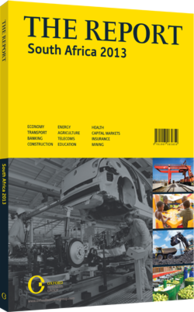Linked to the world: Connections to global networks help position the nation as an IT services hub
At the tip of the continent, South Africa’s position has long made it a natural trade entrepôt, and is now seeing it become an increasingly important centre for global telecommunications. Rising international connectivity is helping boost the country’s competitiveness as an ICT service exporter.
International Connections
As of the end of 2012, South Africa had six international submarine cables, with a total capacity of 29.5 terabits, according to the Department of Communications (DoC). Major connections finalised or under development include the South Atlantic Far East 3 and West Africa Submarine Cable (WASC), running from Portugal to Cape Town; the WASC-linked South Africa Far East from Cape Town and Durban to India and Malaysia; the East Africa Submarine Cable System (EASSy), running down the East African coast from Sudan to South Africa; and the Southern Africa, East Africa, Europe and South Asian cable, SEACOM. This network goes around Africa and links it with India, the Gulf and Europe. May 2012 saw the launch of the West Africa Cable System (WACS, not to be confused with WASC), which links Yzerfontein near Cape Town with the UK via 12 countries along the west coast of Africa. The 14, 500-km, $650m cable boosted South Africa’s international bandwidth capacity by 500 gigabits per second of its initial design capacity of 5.12 terabits per second (Tbps), which may rise to up to 15 Tbps as technology is improved and the network is fully lit up. On testing, WACS achieved the lowest transoceanic round trip delay in history. WACS is expected to help support rapidly growing data volumes in South Africa. Increasing bandwidth and accessibility from WACS is also expected to boost competition on the domestic market, namely by bringing down broadband prices – an objective of the government’s ICT strategy. With WACS complete, attention has turned to the Brazil-Russia-India-China-South Africa (BRICS) Cable, a 34,000-km system that would link South Africa with the world’s four most prominent emerging markets. BRICS would interconnect with WACS, EASSy and Seacom cables, providing 12.8-Tbps capacity. South Africa could thus act as a hub for data traffic between Asia, Latin America and Africa. The BRICS Cable is expected to be ready for the market by 2015.
New Centre
The rise in international connectivity – both in terms of geographical linkages with the rest of the world and in bandwidth – is strengthening South Africa’s position as a global transit centre for data traffic. “The case has been made for South Africa rather than the Middle East as a transit centre for intercontinental cables,” Dobek Pater, director of ICT specialist Africa Analysis, told OBG. “There is greater political stability here, while the Middle East is volatile. And there are already a lot of cables in the Red Sea, which is congested, and they can be damaged by shipping.”
ICT Centre
South Africa’s growing international connectivity is enhancing the country’s under-utilised competitive advantages as a global outsourcing, offshoring and cloud computing centre. These strengths include native English skills, relatively low costs, political stability and a time zone suited to servicing Europe, Africa and beyond. “Business process outsourcing (BPO) is limited in South Africa right now,” Abraham Thomas, CEO of IBM in South Africa, told OBG. “But [the nation] has many of the ingredients necessary to become a BPO centre, it just needs a spark to help it take off. Looking at India, BPO exploded because of access to skills, a multi-lingual workforce (particularly with English) and government incentives to encourage growth. If South Africa wants to grow its BPO sector, it should copy India. It already has a strong regulatory and legal framework, it now needs skills and access to capital.”
After years of underachievement, there are signs that the BPO sector is gaining traction, thanks to falling costs and government incentives. National incentives include a measure introduced in 2011 that grants R112,000 ($13,652) for every job created and held for three years. This subsidy was established with the aim of enhancing South Africa’s price competitiveness.
You have reached the limit of premium articles you can view for free.
Choose from the options below to purchase print or digital editions of our Reports. You can also purchase a website subscription giving you unlimited access to all of our Reports online for 12 months.
If you have already purchased this Report or have a website subscription, please login to continue.

